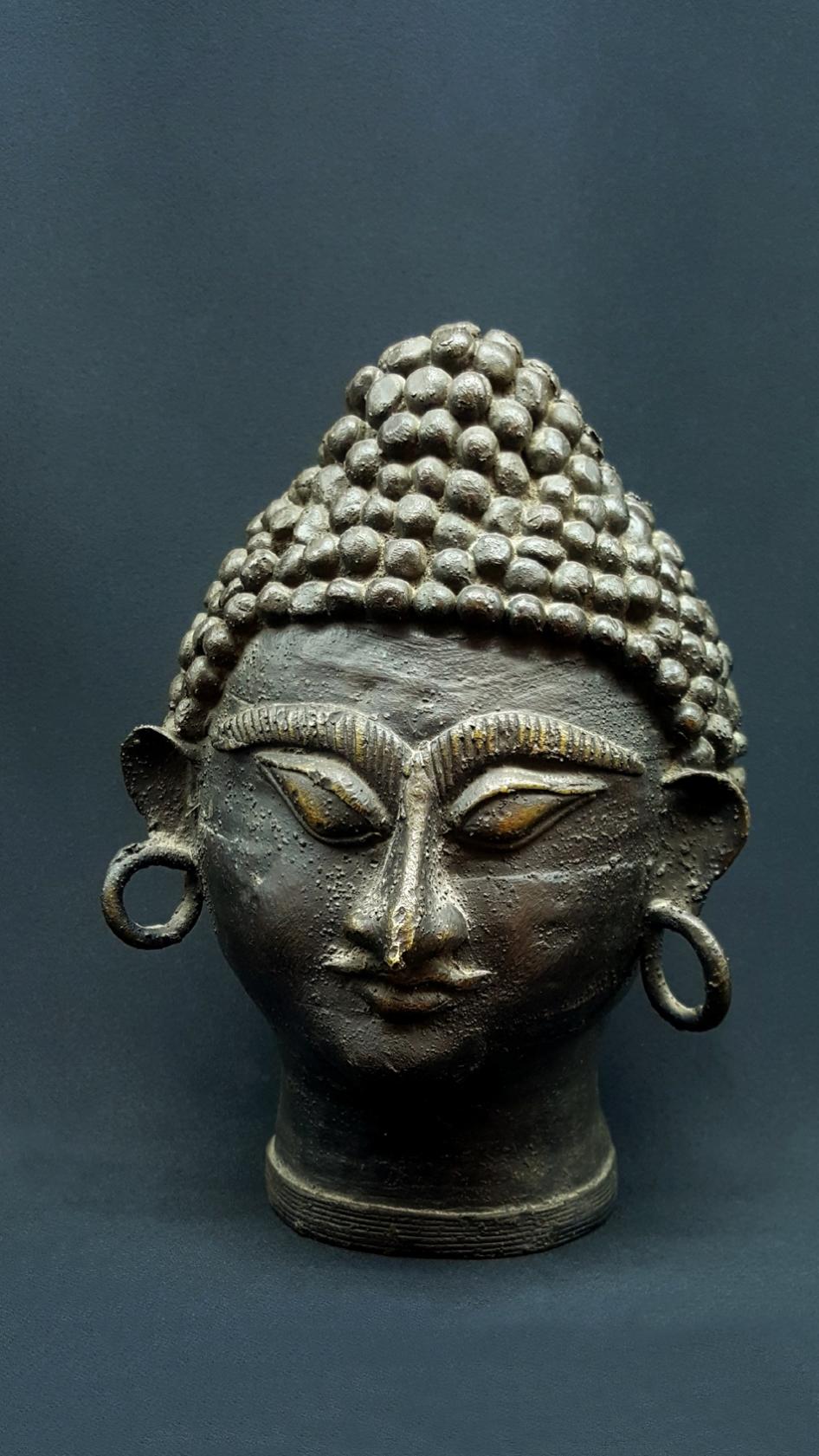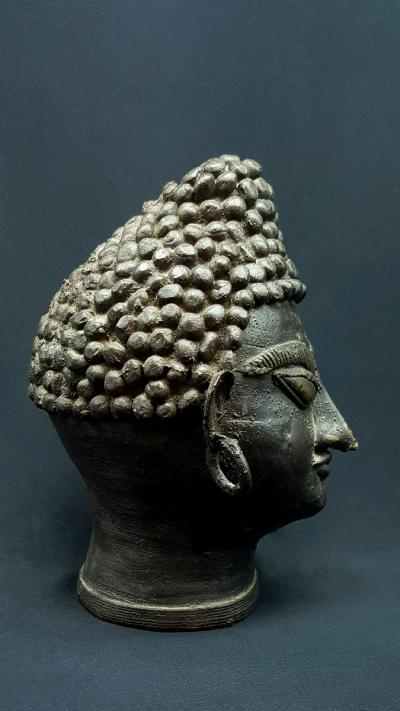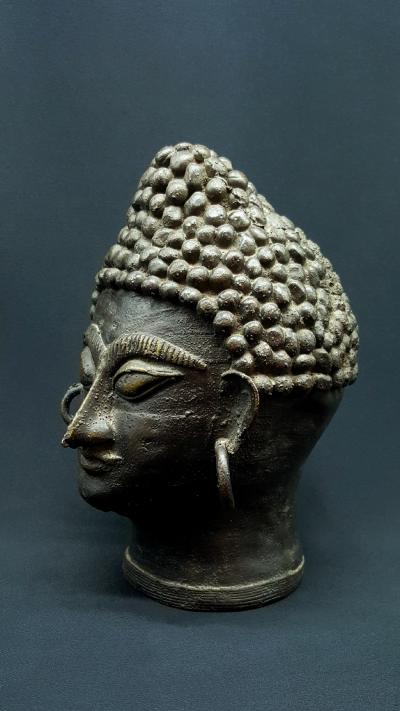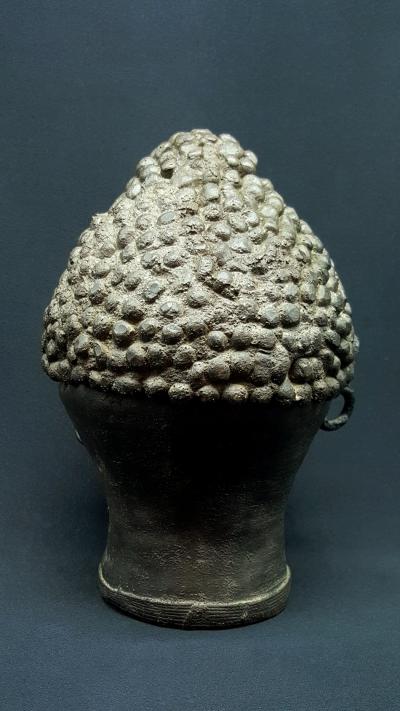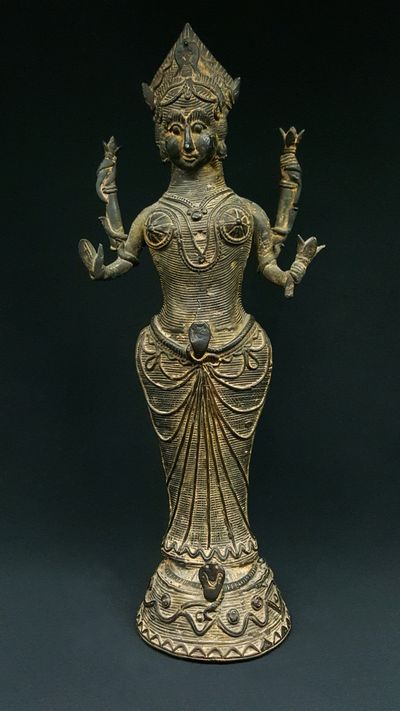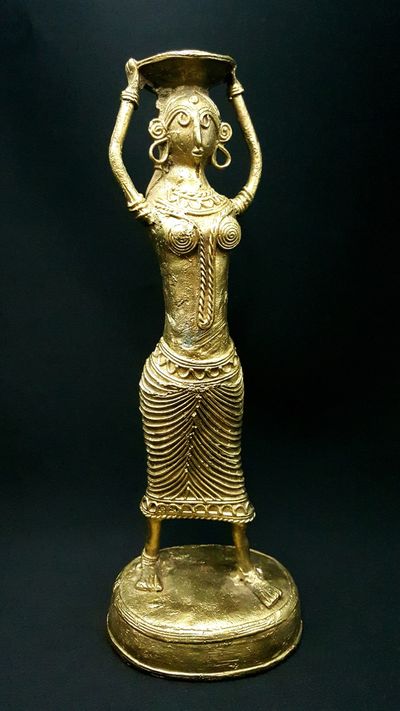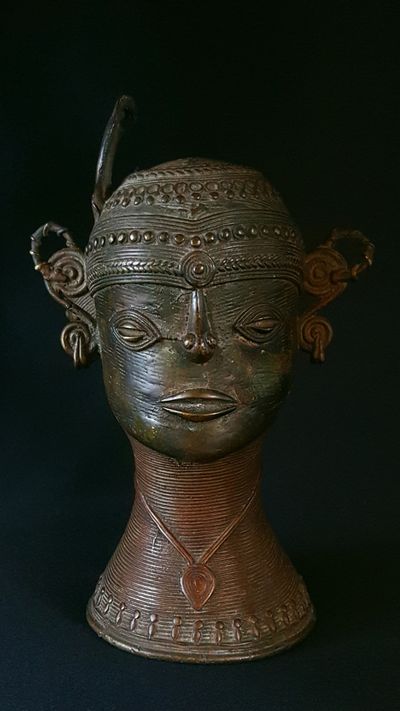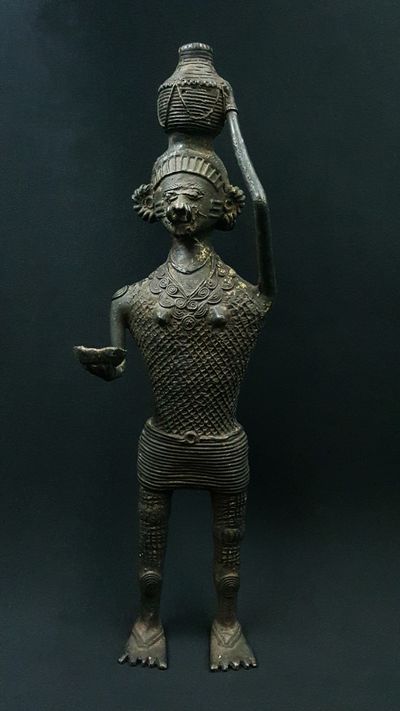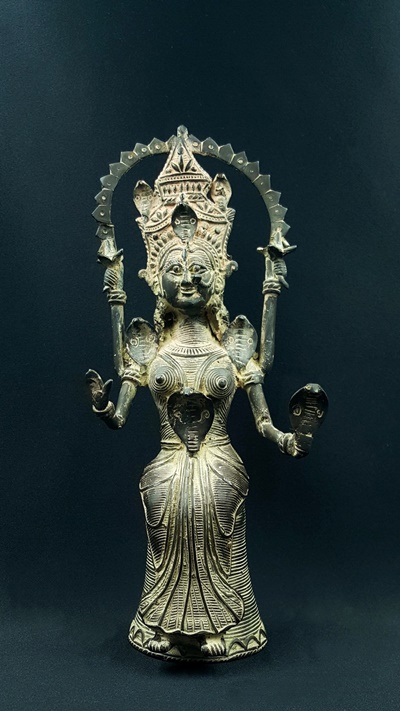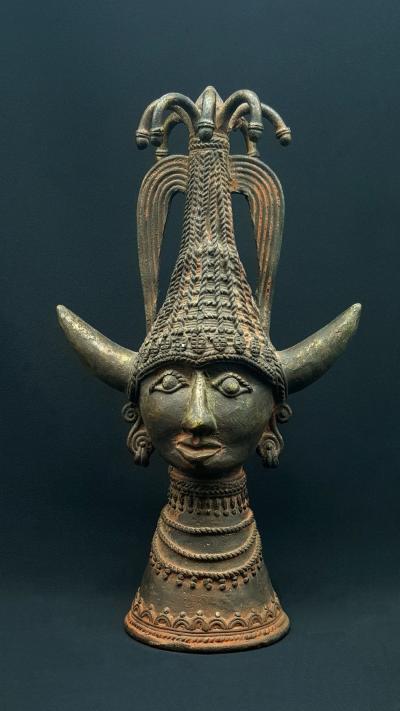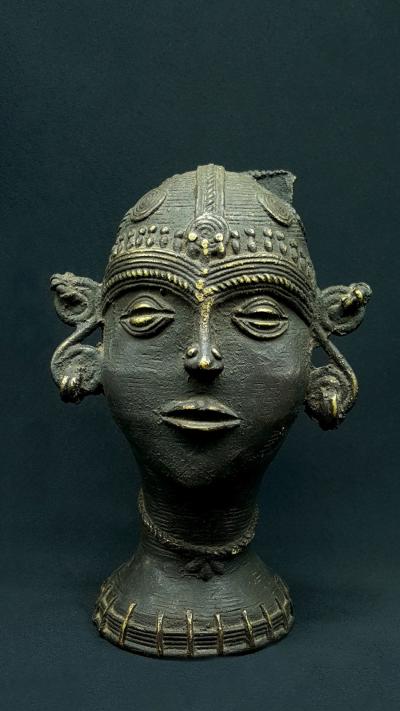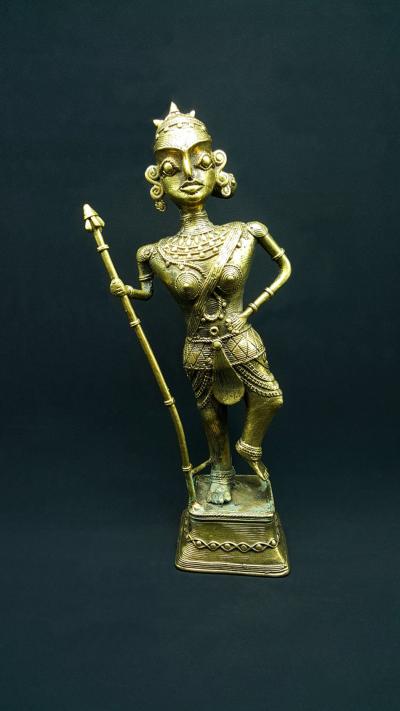Statue Bouddha tête tribale
Pureté sans fard
€320.00
Très rare statue en métal de tête de Bouddha dans le style Gupta : art tribal de l’Inde du Nord tout en sobriété : intériorisation et parfaite sérénité. En savoir plus...
Hauteur : 16.5 cm
Poids : 0.920 Kg
Art tribal
Cire perdue
Origine : Uttar Pradesh - Inde
Livraison gratuite UE, Norvège et Suisse
Description
L'art tribal Dokra Indien
Les tribus, pratiquant l'art Dokra, sont originaires de la région de Bastar, dans l'Inde du Sud (aujourd'hui situé dans l'État de Chattisgarh), elles ont émigré plusieurs siècles auparavant et se sont installées un peu partout en Inde du Nord au Sud.
La plupart ont gardé leur tradition (art culinaire, vestimentaire, fêtes-) et leur religion animiste.
L'art Dokra : un savoir millénaire dans la fabrication de statues
Cet art traditionnel et artisanal n'a pas changé depuis des millénaires (+ de 4000 ans) et la technique utilisée est toujours celle de la cire perdue : un modèle grossier en argile est réalisé puis recouvert de cire par l'artiste qui va lui donner sa forme définitive avec ses détails. L'ensemble est à nouveau recouvert d'un mélange argileux puis chauffé dans un foyer ouvert où un alliage cuivreux sera coulé. voir Blog
Les objets produits par les artistes Dokra peuvent être de nature usuels : coupelle, bougeoir... des instruments de musiques (cuivres), ou bien artistiques tels que des bijoux, des animaux : chevaux, éléphants, tortues..., des statues d'hommes et femmes représentant des scènes de vies quotidiennes et des divinités hindous adoptées par les tribus : Ganesh, Lakshmi, ...
Style
L’essence même du style remonte à l’époque Gupta avec la coiffure caractéristique faite de boucles de cheveux et l’unisha au sommet : la protubérance sur le dessus de la tête ressemblant un chignon est à peine visible (voir le Bouddha de Sarnath). Les oreilles allongées caractéristiques de ce style ne sont pas présentes : par contre les boucles d’oreilles sont là contrairement aux canons de l’art sacré bouddhiste classique Gupta (avant de renoncer à la vie de palais et à son destin de prince, Siddhartha Gautama portait les attributs des nobles et de la richesse dont des boucles d’oreilles : les oreilles allongées marquent ainsi le signe de cette existence précédente et son renoncement).
Les traits sont bien proportionnés ainsi que le nez aquilin qui marquent l’influence grecque sur la sculpture indienne de cette époque .
Une autre différence notable avec l’art classique est la taille des sourcils qui sont ici très marqués alors qu’habituellement un trait fin suffit à les souligner. Par ailleurs les yeux sont légèrement obliques (non horizontaux) et légèrement entre-ouverts alors que la tradition les représente fermés.
Cette statuette symbolise : la sérénité
De fabrication tribale, cette statue de tête de Bouddha est empreinte d’une grande sérénité et d’une grande simplicité tout en exprimant une grande originalité de conception.
